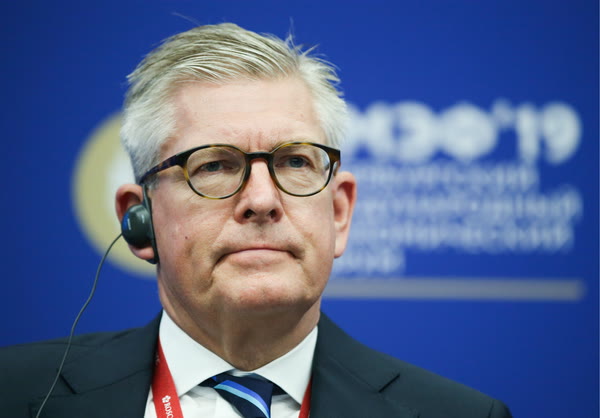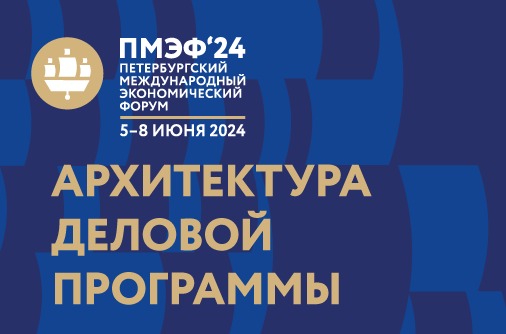
Shaping the Industry of the Future. Digital Technology in Manufacturing
KEY CONCLUSIONS
Digitalization is the basis for modern transformation of all spheres of life and economy
“We need our own, individual, intellectual digital transformation, because the government has allocated major funds for the country’s breakthrough,” Oleg Bocharov, Deputy Minister of Industry and Trade of the Russian Federation.
“In our lifetime we all have seen the transformation of several spheres of human activity, and telecommunications, and the media. Unlike 20 years ago, we now use completely different tools, such as social networks; video services have aggregated millions of people, and we rather get our news from there. The situation with logistics has changed, we use transport in a different way, we now have Yandex.Taxi and Uber; many have already given up their cars thanks to services of this kind. The situation in tourism has changed, and in the financial sphere, too,” Evgeny Kovnir, General Director, Digital Economy.
Digital technologies increase efficiency in manufacturing
“The main goal of digitalization, which we have realized and set for ourselves, is not so much about numbers; it is rather about saving time and resources on product development,” Vladimir Dmitriev, General Director, Kalashnikov Concern.
“Digital technologies provide an opportunity for decentralized accounting and decentralized forms of management, so people increasingly trust the electronic management resources that are based on blockchain and other distributed registry technologies,” Vladimir Potanin, President, Chairman of the Board, MMC Norilsk Nickel.
PROBLEMS
Data access restrictions
“You need to have access to the work data of the equipment you want to operate and predict how it is going to behave. Today, the industrial internet is largely restricted in the rights for access to this data,” Victor Vekselberg, Chairman of the Board of Directors, Skolkovo Foundation; Chairman of the Board of Directors, Renova Group.
Government regulation is imperfect
“Regulators need to understand where technology is heading, otherwise they will be an inhibitor. A large part of the regulation actually touches upon the consumer; it does not touch upon industrial data when machines talk to machines,” Borje Ekholm, President, Chief Executive Officer, Ericsson.
Dependence on foreign technology
“We are 90% dependent on foreign industrial supplies, mainly American, and even those that United Aircraft Corporation, United Shipbuilding Corporation and Siemens use for construction are based on American source codes and tech,” Andrey Klepach, Deputy Chairman (Chief Economist) – Member of the Board, State Development Corporation “VEB.RF”.
Applying digital technology is problematic for small and medium-sized enterprises
“We will not be able to double our economy if we do not learn how to work with business owners; especially in the regions, especially with those businesses that are not part of large holdings, which have already switched to the digital agenda long ago,” Vyacheslav Fedorishchev, Vice Governor of Tula Region.
SOLUTIONS
Minimizing government interference
“Here is the main principle: we truly believe that the industry – the digital industry is a combination of private information systems. The government must retain only the terms, standards and support, and not intervene otherwise,” Oleg Bocharov, Deputy Minister of Industry and Trade of the Russian Federation.
Cooperation between market participants in using digital technology
“An interesting area is not just the monetization of new developments, but the exchange of those developments with other market participants, with their colleagues at least within the industry,” Vladimir Potanin, President, Chairman of the Board, MMC Norilsk Nickel.
“Under the leadership of the Ministry of Transport, we are working to build a unified transport and logistics environment. Using the IoT technologies, we are building our system which allows to track cargos, thus dramatically increasing the speed of cargo transit across the country and increasing the potential of transit for the state,” Evgeny Charkin, Information Technology Director, Russian Railways.
“Digitization is formed, and its backbone is connectivity; without connectivity there is no data,” Rose Schooler, Corporate Vice President, Sales and Marketing Group, General Manager, Data Center Group, Intel Corporation.
Developing technologies for collecting and using big data
“Data is the basis of any transformation. If we learn how to properly collect, store and process it, then, we will certainly be able to solve the numerous problems that any industry faces,” Victor Vekselberg, Chairman of the Board of Directors, Skolkovo Foundation; Chairman of the Board of Directors, Renova Group.
“Another trend associated with developing modern software is the large amounts of data. The amounts of data from the engine and the aircraft is several dozen times, possibly hundredfold larger. That is enormous amounts of data that we need to learn how to collect, which would be the easiest step, then analyze it, build algorithms and use it,” Yuriy Slyusar, President, United Aircraft Corporation (UAC).
Automation and robotization of manufacturing
“Our own journey in automation and digitalization was from originally isolated operations to now connected and increasingly collaborative, in the direction of increasing autonomy,” Peter Terwiesch, President, Industrial Automation Business, Member of the Group Executive Committee, ABB Ltd.
“Today we have already a fully automated and robotized self-optimizing manufacturing plant. It is not about manufacturing as a standalone thing; it is about how you can optimize the full development and the full lifecycle of a product. So, it starts in R&D, and it ends in the disposal of equipment,” Jan Van Tetering, Senior Vice President for Europe, Nokia Solutions and Networks.
Using the latest technology
“It is impossible to turn everything digital. According to our calculations, at this stage no more than 25% of equipment failure, technical, aerodynamic situations can be simulated. But, for example, 25% means about 400 flights for each model and three years [of flight tests, – Ed.], which results in billions of roubles,” Yuriy Slyusar, President, United Aircraft Corporation (UAC).
Development of predictive analytics
“We had an idea to see whether it is possible to somehow predict that a machine will break down between scheduled maintenance, so that more work could be done during the next scheduled repair, to stop the machine from breaking down in the process, thereby reducing unproductive time losses,” Alexey Belinsky, Chief Executive Officer, Ctrl2Go.








